As I discussed in a previous post where I talked about treating standing as a skill, I realize that few of us experience much of a challenge in maintaining a neutral position while standing, or even as we vary our upright position. Understanding and advancing your movement ability happens best under a stressor or stimulus, so it helps to challenge the neutral spinal position by introducing simple demands on movement control. As your spine changes orientation in space, it is affected by gravity, and this seems like a natural challenge to start with. Simply changing your position in relation to the ground, such as lying down on your back, adds a controlled challenge.
Getting into the hollow body position is hard for some people and easy for others. Regardless of where you fall, if you hold the hollow body position at peak tension, you will quickly fatigue and have to come out of it. Your goal is to be able to hold this position stable for as long as possible. A simple test is to see how little muscular tension you can use while maintaining the structure of the hollow body position. When I test this important concept of consciously changing the amount of muscular tension required to hold this shape, people start shaking. This shake is a flinch response that will be described after I go over the following hollow body progression.
Hollow body progression
1. Lie on your back with your knees tucked in toward your chest, with your arms flat to the ground.

2. In the same tuck position, extend your arms straight out in front of you.
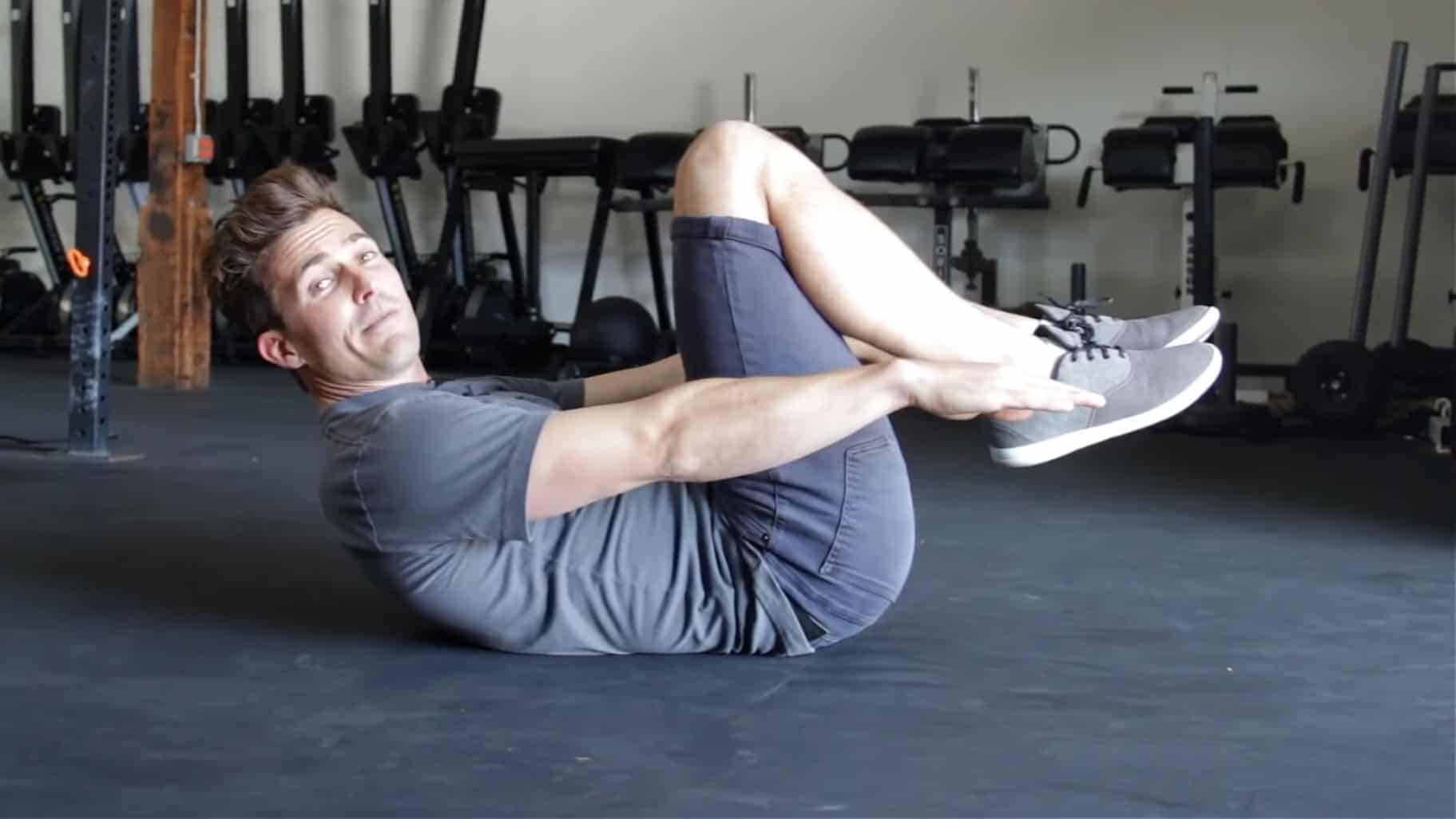
3. Extend one leg, keeping the other leg bent.
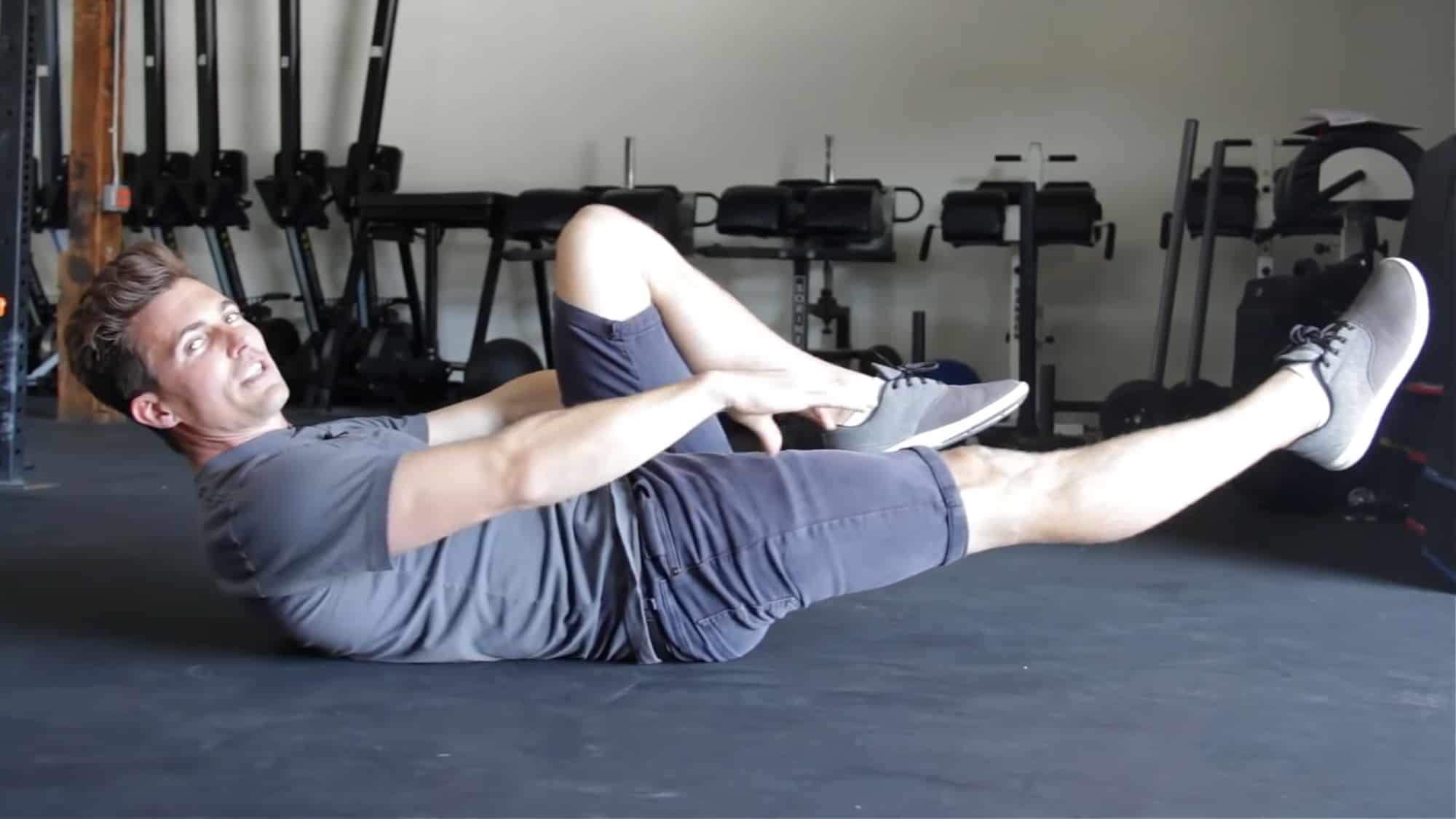
4. Extend both legs so that they are completely straight, with your feet together and your toes pointed.

5. Bring your arms overhead. This is the hollow body position.
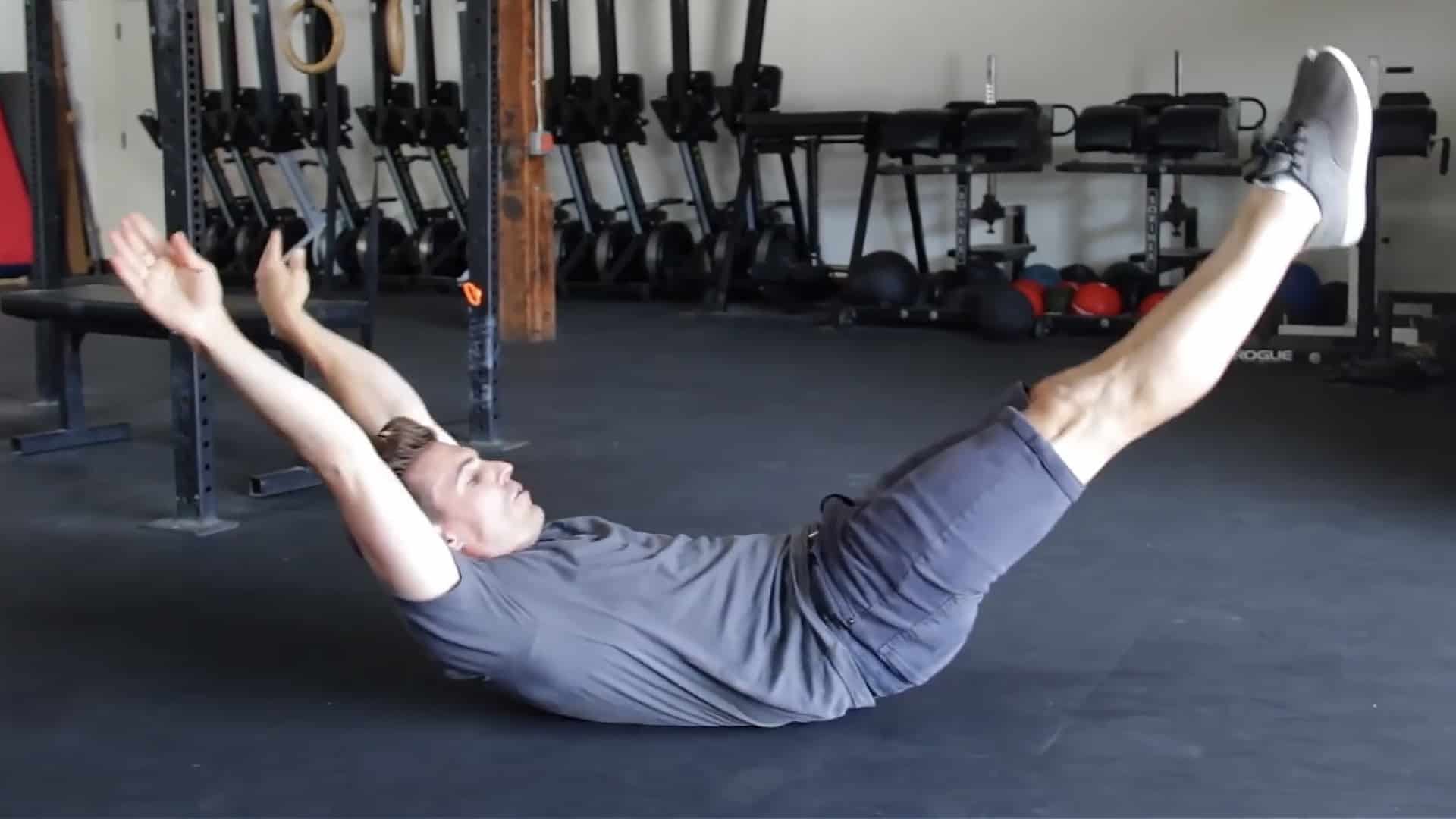
The lumbar spine, which is the segment that connects your upper body to your lower body, is the most important part of the spine to address in movement control for adults. The cervical spine, which controls your neck, is the most important part of the spine to keep in mind for infants. The lumbar spine is dedicated to motor control, and the cervical spine to proprioception and orientation in space.
Creating tension
Why pointed toes? Pointed toes are a common expression in gymnastics, but that expression has a greater meaning than simple aesthetics. Pointing your toes is an expression of pushing, which your body is wired to do to create tension and movement. A simple question I like to ask is: If your car breaks down or runs out of gas and you have to move it off the road with your own body, do you push it or pull it? Obviously, you are going to push it. There are many reasons for this from an anatomical or structural perspective, but in terms of movement control, it is because elongating the nervous system creates more tension in the body and allows for a greater application of force. If you watch someone jump, you see her push away from the ground with her legs, and as she pushes off, you see her hips and knees extend, followed by her feet pointing away from her body as an expression of finishing the push and reaching the full potential of mechanical work output through range of motion and muscular tension from the point of extension.
Loading order
The order in which you get into positions is quite important to the story of movement control. It is referred to as loading order, or the order of adding load to a movement by changing your position without adding an external load like a barbell in order to get to the final position (or often the starting position). In the hollow body progression, you load up your spine by bringing your legs and arms in first. This creates muscular tension around your abdominal area but no stress around your lumbar spine. As you drop your legs down, you steadily increase the amount of pull on your hips, which increases the muscular tension around your lumbar spine. This increased lumbar spine tension requires a compensatory increase in abdominal tension to maintain the neutral position. The same thing happens as you move your arms to your ears, but on a much smaller scale due to the size and length of your arms in relation to your legs.
Even though the hollow body position is a great way to work on movement control at spinal level, it is important to understand that this global body shape is not applicable to squatting or deadlifting, or even the Handstand. But it is a great way to learn how to load up your lower back or lumbar spine, which is very sensitive to going into even more extension and wants to trigger the flinch. The tremor you see in the hollow body position when backing off the tension is a series of micro-flinches, which is “a very basic expression of physiological motor control. If you can’t control this spinal position while moving, it will affect all other movements as you progress into more complex and advanced ones.
The gym is an exaggeration of reality, and you can train movement and position at peak tension to develop motor control. As your body adapts and becomes more efficient, achieving the same tension no longer requires as much energy expenditure. This is a fundamental concept in training and therefore in progression.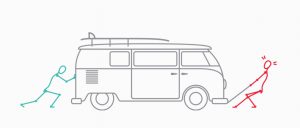
We are natural pushers. Imagine you are driving your car it runs out of gas just a few hundred feet from a gas station. Would you get out and push or pull your car to the gas station?
Flinch
When I asked you to explore the amount of tension necessary to maintain control over your hollow body shape, you probably found a point where tremors or shaking challenged your control of that shape. Why did you shake? You shook due to a lack of stability at lumbar spine level under tension or load. But what does this mean? Your central nervous system is like a command center, and it has an extremely complex design to communicate with your body. One of these elements is a sophisticated and powerful protective mechanism called the flinch.
I like to bring up the flinch (or spinal flinch) in order to get you to understand movement control, because this protective mechanism kicks in especially when you lack stability at spinal level. The shaking that you experience in the hollow body position is just one example of this flinch. The flinch at this scale is a series of micro-flinches—which is essentially like an on-off switch of the nervous system trying to protect you from injury.
The micro-flinches occur due to a loss of neuromuscular control. In this case, because you are in global flexion, you are loading up the lumbar region of your spine. Around this section of your spine, all you have is muscle tissue to support the structure. In other sections, such as the thoracic spine, you have ribs and shoulder girdle that provide extra stability. This freedom around the lumbar spine is important because it facilitates the transmission of locomotion driven from the lower body into the upper body and from the upper body downward.
I am in the hollow body position. If I lose engagement of my belly and butt, gravity pulls down my upper body and legs, placing my spine in local extension.
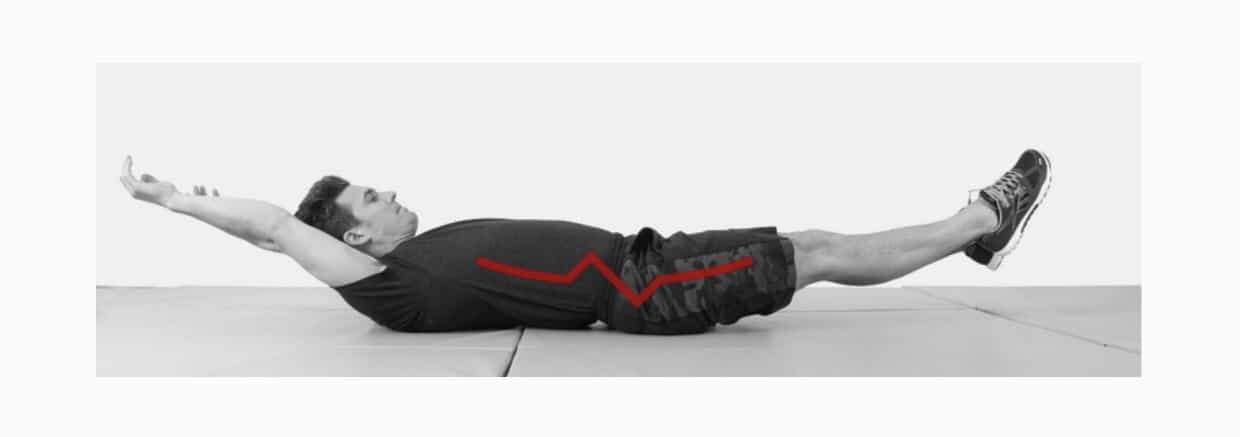
I am in a supine position. As I press my hips and belly away from the ground, gravity pulls my lumbar spine into extension.

As we become familiar with these basic shapes and realize how we are developing control at spinal level we can begin to see the translation into more advanced movement which will directly impact our individual performance and physical expression.
For more information, you can reference Freestyle the book, Pages 54-56, Chapter 2, Part 1.
Also watch this video addressing The Hollow Body progression.
Contributor: Carl Paoli